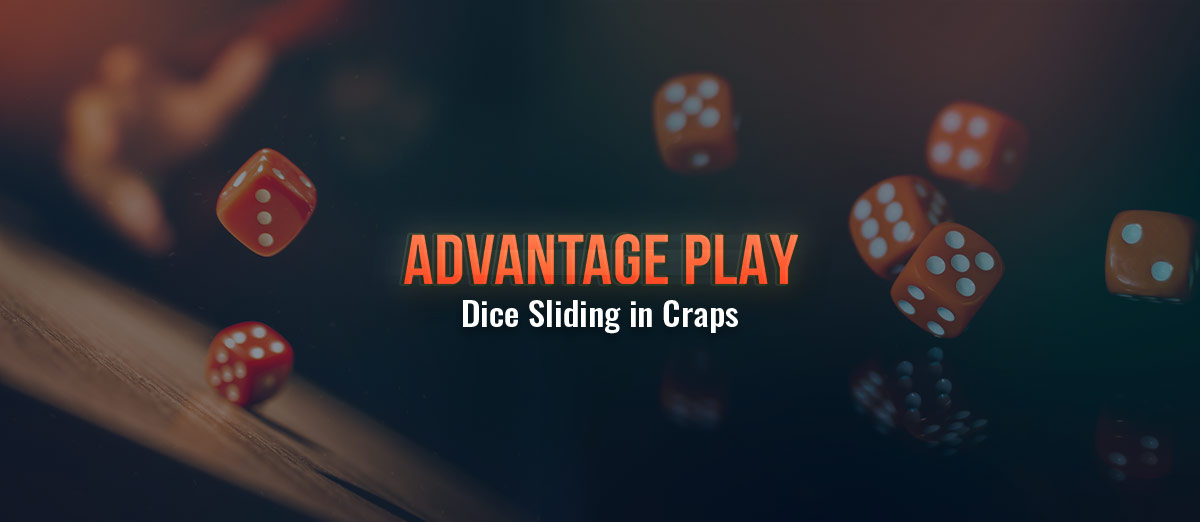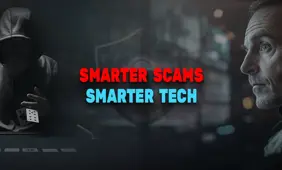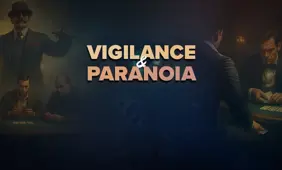Dice Sliding in Craps – Can You Beat the Game?

While many people are aware that blackjack is vulnerable to something called "card counting" (thanks to movies and TV shows), most would be surprised to learn that every game in the casino is vulnerable to some form of advantage play or cheating attack. One game assumed to be impossible to beat is craps, but thanks to centuries of dishonest dice players, there are multiple ways to defeat the odds.
Controlling Dice Movement – Possible or Not
Later, I will talk about the multitude of crooked dice that exist but for today, let's see how ordinary casino dice can be used to roll more winners than losers in the long run.
The idea of controlling legitimate dice is not new, nor is it entirely illegal.
The rules of craps dictate that both cubes be thrown towards the back wall so they bounce from there to the floor of the tub, where they will (apparently) roll randomly, but some players have attempted to influence how the dice roll.
So-called "advantage systems" like Frank Scoblete's "Golden Touch" claim to achieve some level of control over the outcome by following the table rules but arranging the dice and throwing them according to Scoblete's method.
The "Golden Touch" method claims to block out a certain number while favoring others more than the standard odds would expect for these outcomes. Followers of Scoblete's system (and others) will attest to having great success, but I remain dubious, given the proclivity for people (and especially gamblers) to seek patterns in short chains of results and I have yet to see any hard evidence that this kind of overt throwing method has any impact on the casino's bottom line.
Personally, I find it difficult to believe it makes an ounce of difference if you are really hitting that back wall and allowing two solid cubes to bounce off a solid surface.
Professional dice cheaters, on the other hand, took a different approach to the same problem.
If you analyze Scoblete's throwing method, where the dice are placed together in a known configuration and then thrown with a particular grip designed to keep the dice together for as long as possible while causing them to also spin in unison as they are thrown; you are looking at the essential mechanics of the infamous "blanket roll".
Controlled Roll in Craps
Craps is based on the old English game of Hazard and was originally called "Crabs" before being spread along the Mississippi by workers and deck hands until returned with the name "Craps" as a colloquial derivation. Bernard Xavier Phillippe De Marigny de Mandeville is credited with adapting the game and even named a street in New Orleans "Rue De Craps" in recognition of the game's success in the United States.
Craps really flourished as a result of World War 2, where a form of street craps became popular with servicemen of all backgrounds who gathered to throw dice on a blanket, and this surface offered dishonest players the opportunity to fleece their bunkmates.
The blanket roll, similar to Frank Scoblete's "Golden Touch" method, is a way to throw the dice, so they spin one axis, and only the four numbers of that axis are likely to end uppermost while two sides - aces and sixes for instance - are far less likely thanks to the throwing (rolling) method.
Unlike the Scoblete system, the basic blanket roll does not require the dice to bounce off anything and is so effective that the two blocked-out sides almost never appear unless the cheater wants them to.
Smart players soon recognized the need to add a backboard that players must hit before the dice come to a halt but even then, the blanket roll offered a distinct advantage because the soft surface of the blanket allowed cheaters to sustain the initial roll even if the dice started above the blanket when thrown.
The nature of that backboard also made a difference since some materials were far easier to maintain a roll than others. A book, for example, can deaden two dice more than deflect them, so desired (controlled) numbers remained more likely. A metal box could have the opposite effect, but a few old-time cheaters assured me they still had a strong edge and could adapt to any new rules or circumstances.
At a casino craps table, matters are made worse by the hard surface (under the painted baize layout) and a rubberized backboard with a pattern of pyramid-shaped protrusions that make it very hard to predict at what angle the tossed sized will contact the wall and in what direction they will bounce afterward.
So-called "advantage" systems like "Golden Touch" attempt to solve this problem with a high, narrow-arc throw that causes the dice to approach the backboard from a forty-five-degree downward angle or to bounce first before contacting the wall.
Controlled Dice Shot - The "Slide" or "Scoot"
A few dice mechanics (cheaters) attempted to target the flat rubber at the base of some backboards to get a more predictable bounce, but this method of "jamming" the dice was unreliable at best, requiring accuracy that might result in repeated actions, sure to be noticed if they won the attention of people upstairs.
The most successful - and well-known - controlled dice shot is the "slide" or "scoot," where both dice are released at the same time, with one being thrown randomly towards the back wall while the other is slid along the layout rotating horizontally (spinning) but never tumbling, so the uppermost number remains the same throughout the roll.
This may sound like an easy move to spot, but players and dealers alike have been fooled many times by a well-timed scoot thanks to the natural inclination to follow the die that bounces furthest, and once that lands, the roll seems (in retrospect) complete and fair.
In fact, most scooters are caught on camera thanks to casino security's ability to rewind and rewatch how dice move when thrown.
Note that the sliding die never hits the back wall, but in many casinos, this will fly if the move is only used occasionally and the dealers are not too strict. Naturally, this move is employed when stakes are high but not so high they will wake up management or security.
Of course, not hitting the back wall limits how often the move can be used and where it will be effective, so cheaters found a way to solve the problem: they bounced the sliding die off the edge of the "On/Off" puck which happens to have a helpful rubber ring around it! The result was two dice that changed direction during the throw - one off the wall and one off the puck, and since the puck is part of the game, this throw is entirely legal in many joints!
Defeating scooters requires an alert, well-educated team of dealers, but the table itself can be adapted to make a slide almost impossible.
Smart casinos accomplished this by placing a line of taught string under the middle of the layout so any sliding cubes would trip and tumble on the slight bump the string created. This is a pretty good solution, but expert dice shooters have used that bump to create a predictable roll, but few believed it was reliable enough to bet on!
The Shot Technique
The ultimate solution was to throw two dice above the layout, and while one tumbled and bounced fairly, the other spun on the horizontal plane before landing at an angle that maintained that plane until the dice came to a halt with the desired (controlled) number uppermost.
This throw is known as "the shot" and is incredibly difficult to spot since expert shooters - and there are very few - can make the spinning die "wobble" in mid-air to camouflage its one-directional rotation!
I know one gaming expert who can make this shot reliably and spent many hours and years learning to do so purely as a challenge!
This kind of shooter is very rare, and unless you know the secrets to this shot, it's highly unlikely even the most determined player will dedicate the time or space (you need a full-sized craps table at home) to master such a move.
There are easier ways to beat craps, but like a shot, none of them adhere to the rules and are, therefore, all forms of cheating, unlike advantage systems (like "Golden Touch") that try to create a slight improvement in odds by theoretically controlling elements of the throw.
Why Not Try It?
While I personally have little faith in systems like this, if you want to learn this kind of technique (through books or expensive courses), I say go ahead! Several gambling experts have studied these methods, and multiple players (like the so-called "Dominator") profess to a high-win ratio over many years, so I remain quite curious.
Most interestingly of all, casinos have backed-off players who pre-set the dice and throw in a pendulum fashion, so maybe their bottom line has been affected, or perhaps they're just being overly defensive. If they really want to defend their game, perhaps they should simply insist dice do not go above the rail when tossed, which would make it very difficult to control the angle of contact.
Ultimately, as long as you play wisely and don't gamble on what you can't afford to lose, why not experiment with this type of method to throw your dice? If it works, you win, and if it doesn't work, your odds won't change one bit.
Related:





Review this Blog
Leave a Comment
User Comments
comments for Dice Sliding in Craps – Can You Beat the Game?